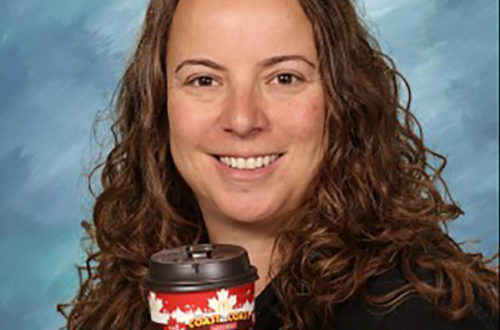Journal of the Mathematics Council of the Alberta Teachers’ Association
Volume 38 Issue 1, December 2000
When you receive this issue of delta-K in early 2001, World Mathematics Year 2000 (WMY 2000) and our annual conference that focused on World Mathematics Year 2000 will be events of the past. Should we allow these events to simply fade away or should we continue to celebrate, acknowledge and work in the spirit of the Declaration of Rio de Janeiro on Mathematics of May 6, 1992, when the International Mathematical Union (!MU), supported by the United Nations Educational, Scientific, and Cultural Organization (UNESCO), declared the Year 2000 to be World Mathematics Year? To me, the answer is obvious because the declaration embraced three important goals that are worthy of our focus for many years to come:
- The determination of great mathematical challenges of the 21st century
- The promulgation of mathematics, both pure and applied, as one of the main keys for development
- The recognition of the systematic presence of mathematics in the information society (the image of mathematics)
In planning for WMY 2000, The Tum of the Century Committee was established and was chaired by Jacob Palis (IMU secretary, Brazil), with nine additional members from around the world. This committee envisioned what the great mathematical challenges of the 21st century will be. The computer presence for World Mathematics Year 2000 was established in Paris with the Internet address, http://wmy2000.math.jussieu.fr.
The resolution that declared the year 2000 as World Mathematics Year was driven by a belief that the discipline of mathematics is playing an increasingly crucial role as our society makes the transition from the Industrial Age to the Information Age. Mathematical knowledge and skills are essential for the growth of information and knowledge-based industries, and they are necessary for Canada to be competitive in the global economy. In its support for the declaration, UNESCO highlighted the central importance of mathematics and its applications in today’s world with regard to science, technology, communications, economics and numerous other fields.
UNESCO is also aware that mathematics has deep roots in many cultures and that the most outstanding thinkers over several thousand years contributed significantly to its development. As well, the language and the values of mathematics are universal, thus making it ideally suited for international cooperation. UNESCO in its resolution to support the declaration also stressed the key role of mathematics education, in particular at the primary and secondary levels, for both the understanding of basic mathematical concepts and the development of rational thinking.
World Mathematics Year 2000 projects and activities included the following:
- A logo for WMY 2000
- WMY 2000 posters
- National WMY 2000 website
- WMY 2000 newsletter (started in 1993 with one per year and two per year in 1999)
- WMY 2000 homepage included global links
- Global reports about WMY 2000 activities
The world truly celebrated WMY 2000. The many countries that participated had comprehensive programs, which were shared on the website.
Canada, too, celebrated. The Canadian Mathematical Society (CMS) created a committee for WMY 2000 in 1997 to develop proposals for events during the year 2000 to make mathematics more visible in Canada. In addition to this CMS initiative, other Canadian mathematical societies and institutes participated and proposed activities to celebrate WMY 2000.
In celebration of WMY 2000, the CMS and CAIMS (Canadian Applied and Industrial Mathematics Society) met for the first time in a joint annual meeting, June I 0-14, in Hamilton, Ontario. These societies were joined by the Canadian Operations Research Society, the Canadian Society for the History and Philosophy of Mathematics, the Canadian Symposium on Fluid Dynamics and the Canadian Undergraduate Mathematics Conference. This joint meeting brought together the largest number of Canadian mathematical scientists ever assembled in one place. Mathematicians from around the world attended as well.
In June 2000 at the Royal Ontario Museum in Toronto, the Fields Institute hosted a symposium to inform all Canadians of our unsung hero in the mathematical sciences, the visionary John Charles Fields, and his exceptional contributions to the world of mathematics. He established the world’s highest award for achievement in mathematics, now known internationally as the Fields Medal (and often referred to as the “Nobel Prize of Mathematics”). It is struck by the Royal Canadian Mint of Canadian gold and shows the head of the ancient Greek mathematician Archimedes on the face. As a lasting record of this unique event, a documentary video and book have been produced.
In Montreal, Operation Metro-2000 was organized with support from CRM (Centre de recherches mathematiques), CMS and other sources. Posters were placed in the Montreal subway system to raise public awareness, particularly among students, of the importance and omnipresence of mathematics in the sciences and technology.
In western Canada, the WMY 2000 Museum of Mathematics Project brought the highly acclaimed travelling public exhibition, “Museum of Mathematics” [Mathematik museum], to visit the Winnipeg Children’s Museum and the Saskatchewan Science Centre in Regina for two weeks each in May.
The Pacific Institute for the Mathematical Sciences (PIMS) promoted mathematics awareness by holding public lectures, presentations and hands-on workshops. Like Operation Metro-2000 in Montreal, for its “Mathematics Is Everywhere” campaign, PIMS placed posters on all public transportation systems in British Columbia and Alberta to increase public and student awareness of the importance and omnipresence of mathematics in the sciences and technology.
A number of British Columbia and Alberta elementary schools presented fun methods for doing mathematics and computer science with children and their parents.
The MCATA conference in Red Deer was itself a major event organized around the theme “World Mathematics Year 2000.”
I believe that WMY 2000 celebrations need to continue well beyond this year. I also believe that if we want to achieve the goals set out in the Rio de Janeiro declaration, schools and school systems must take an active part in addressing them. It is at the school level where it all begins and where a love for mathematics develops. It is really here where the seeds of a mathematical culture are sown, so that one day mathematics, like music, is worth doing for its own sake. This is not to deny the great usefulness of mathematics; this very usefulness, however, tends to conceal and disguise the cultural aspect of mathematics. The role of music suffers no such distortion because it is clearly an art whose exercise enriches composer, performer and audience; music does not need to be justified by its contributions to some other aspect of human existence. Nobody asks after listening to a Beethoven symphony, “What is the use of that?” Moreover, mathematics does not gain in utility by having its inherent worth ignored–on the contrary, an appreciation of mathematics and an understanding of its inherent quality and dynamic are necessary to be able to apply it effectively.
World Mathematics Year 2000 was more than just engaging in a few mathematical activities. It was and continues to be about making a case for mathematics as something that is deeply rooted in our culture, as something that grows and develops in many ways unrelated to science and that therefore plays a crucial role in the history of human thought.
I long for the day when mathematics will be appreciated and enjoyed by students and educated lay people as an art and also respected as the mainstay of science. It has been so in the past, but it is not so now. World Mathematics Year 2000 allowed us to work with our students and communities toward that goal, but it must not end here.
Klaus Puhlmann
1 – 3
4 – 5
Klaus Puhlmann
6
Sandra Unrau
7 – 12
Klaus Puhlmann
13 – 14
NCTM Standards in Action Content Standard: Geometry
Klaus Puhlmann
15 – 17
Geometry Problems Promoting Reasoning and Understanding
Alfred B. Manaster and Beth M. Schlesinger
18 – 22
Interactive Technology and Classic Geometry Problems
Jean J. McGehee
23 – 27
Using ROOTine Problems for Group Work in Geometry
Regina M Panasuk and Yvonne Greenleaf
28 – 29
World Mathematics Year 2000 Poster
Alie Boos
30 – 32
Robert Barrington Leigh and Richard Travis Ng
33 – 34
Arthur Jorgensen
35 – 37
1999 Calgary Junior Mathematics Contest
Robert E. Woodrow
38 – 45
Aspects of Numeracy in the Primary Years (K-3): Selected Challenges for Teachers
Werner Liedtke
46 – 48
Murray L. Lauber and Keith Harder
49
Exemplifying If-Then Principles in Logical Reasoning
David R. Duncan and Bonnie H. Litwiller
50 – 51
An Interesting Mathematical Fallacy That All Triangles Are Isosceles
Sandra M Pulver
52 – 53
Rational Fractions: Combine and Simplify
Ron Persky
54
Klaus Puhlmann
55
Unsolvable Problems: Quadrature of the Circle
Klaus Puhlmann
56



